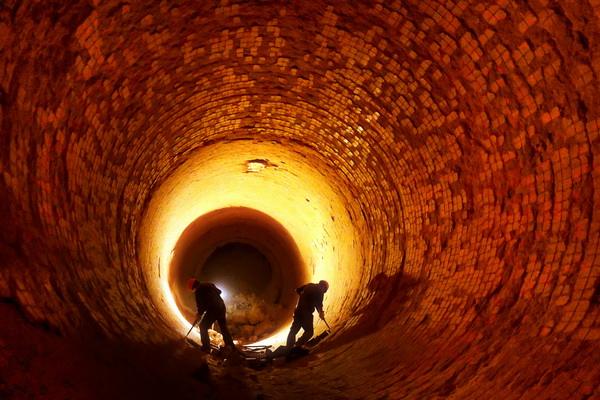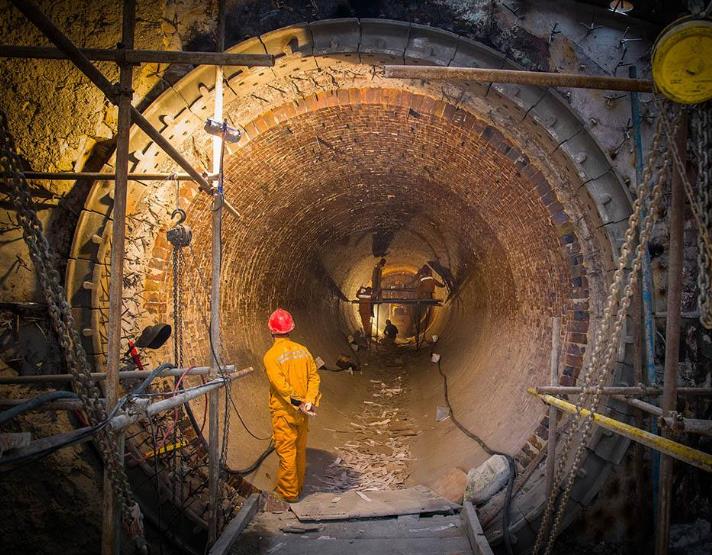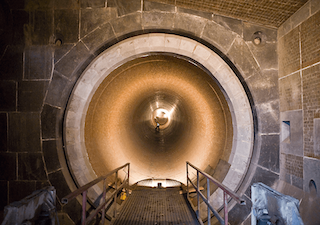Eleven common basic questions and answers about refractory materials
Mar 01, 20241.What is the porosity of refractory materials?
There are three types of pores produced in refractory materials during the production process, namely open pores, closed pores and through-holes.
Apparent porosity is the ratio of the volume of the pores (open H pores) connecting the refractory material to the atmosphere and the total volume. True porosity is the ratio of the volume of all pores in the refractory material (including the volume of open pores, closed pores and through-holes) to the total volume.
2.What is the breathability of refractory materials?
Air permeability is a characteristic value that characterizes the difficulty for a certain amount of gas to pass through a refractory product under specific conditions. It is defined as: the number of gases of a certain pressure passing through a refractory material sample of a certain section and thickness within a certain period of time.
Except for the breathable bricks of the ladle, the smaller the air permeability of the remaining refractory materials, the better, which can reduce the erosion rate of slag and reduce the thermal conductivity of the refractory materials.
3.What is the thermal expansion of refractory materials?
During the use of refractory materials, as the temperature increases, the anharmonic vibration of atoms between the main crystal phase of the refractory material and the matrix increases the atomic spacing in the object, causing volume expansion, which is called thermal expansion of the refractory material.
Thermal expansion of refractory materials is usually expressed by linear expansion rate and linear expansion coefficient. It is defined as:
(1)Linear expansion rate. The relative change rate of the length of the refractory material sample when it is heated from room temperature to the test temperature.
(2)Linear expansion coefficient. When the refractory material sample is heated from room temperature to the experimental temperature, the relative change rate of the sample length for every 1°C increase in temperature.
Thermal expansion of refractory materials is related to the crystal structure of the refractory materials. The bond energy forming the crystal in the middle of the crystal structure determines the thermal expansion coefficient. For example, in the middle of the crystal structure of MgO and Al2O3, oxygen ions are closely packed. After the refractory material is heated, the mutual thermal vibration of the oxygen ions causes the refractory material to have a large thermal expansion rate. Structurally highly anisotropic refractories with low thermal expansion rates, typically cordierite.
Thermal expansion of refractory materials is related to the safe performance in the steelmaking process. For example, refractory materials with poor thermal expansion properties will expand and crack during the baking stage of use, causing damage to the refractory materials; cracks may also occur during use, which is also an important factor affecting the smooth implementation of steelmaking.
4.What is the thermal conductivity of refractory materials?
Thermal conductivity refers to the amount of heat passing through unit vertical volume per unit time under unit temperature gradient. Thermal conductivity is closely related to the porosity and mineral composition of refractory products.
Generally speaking, the thermal conductivity of the gas in the middle of the pores of refractory materials is very low. Therefore, refractories with larger porosity have lower thermal conductivity.
In the mineral composition of refractory materials, the more complex the crystal structure, the lower the thermal conductivity; the more impurities, the lower the thermal conductivity.
5.What is the heat capacity of refractory materials?
The heat required to heat 1kg of a substance to raise its temperature by 1°C under normal pressure is called the heat capacity of the substance, also known as the specific heat capacity. Specific heat capacity will affect the baking heating and cooling of refractory materials during the use of refractory materials. Refractory materials with larger specific heat capacity require a relatively longer baking time.

6.What is the refractory degree of refractory materials?
The ability of refractory materials to resist high temperature without melting is called refractory degree. Refractory materials do not have a fixed melting point, so the refractory degree actually refers to the temperature when the refractory material softens to a certain extent. Refractory resistance is an important indicator of refractory materials. The refractory resistance of refractory materials should be higher than its maximum service temperature. The refractory test is to make the refractory material to be tested into a cone sample according to the regulations, and heat it together with the standard sample. The cone is softened by the high temperature and bends. When it bends until the tip of the cone contacts the chassis, Temperature is the refractory degree of the refractory material.
7.What is the load softening temperature of refractory materials?
Load softening temperature is also called load softening point. Refractory products have high compressive strength at room temperature, but when subjected to load at high temperatures, they will deform and reduce the compressive strength. Load softening temperature refers to the temperature at which a certain deformation occurs under constant load at high temperature.
8.What is the thermal stability of refractory materials?
The ability of refractory materials to withstand rapid changes in temperature without cracking or damage, as well as the ability to resist chipping or cracking during use, is called the thermal stability of refractory materials. The thermal stability of refractory materials is expressed by the number of rapid cooling and rapid heating, also known as rapid cooling and rapid heating resistance.
9.What is the slag resistance of refractory materials?
The ability of refractory materials to resist slag erosion at high temperatures is called slag resistance.
The slag contacts the refractory material in a liquid state, forming a liquid phase with the refractory material, and is peeled off from the surface of the refractory material; or it enters the interior of the refractory material from the pores of the refractory material, causing volume expansion changes during the temperature change, causing the refractory material to become loose. Damage, or entering the interior of the refractory material, forming a new high-melting point spinel phase, causing the ladle and other refractory materials to be unable to be used normally and damaged. Furnace gas and various substances in contact with electric furnace refractory materials are likely to suffer from the above forms of damage. Therefore, in addition to surface dissolution of the refractory materials eroded by molten slag, the molten slag can also invade or penetrate into the interior of the refractory materials. Expanding the reaction area and depth of slag and refractory materials causes qualitative changes in the composition and structure of the refractory materials near the surface of the refractory materials, forming a metamorphic layer that can easily dissolve into the slag, shortening the service life of the refractory materials. The corrosion mode of this refractory material is mainly related to the porosity of the refractory material. Different refractory materials have the same composition, but if their organizational structures are different, their corrosion rates will also be different. The higher the porosity of the refractory material, the weaker its slag resistance.

10.What is the burning loss index of refractory materials?
The burning loss index of refractory materials represents the burning loss effect of arc on the furnace wall. It was proposed by W.E. Schwabe of the United States in 1962. This index plays an important role in determining the smelting process route, such as ladle refining furnace. The secondary side voltage is determined based on the burning loss index of the refractory material.
11.What is the mineral composition and chemical composition of refractory materials?
Mineral composition refers to the mineral petrographic structural components contained in refractory products. For example, the main crystal phase in magnesia carbon bricks, periclase crystal phase, is the main mineral composition of magnesia carbon bricks. Refractory materials with the same mineral composition have different mineral crystal sizes, shapes and distributions, and the properties of the refractory materials will also be different. The mineral composition of refractory materials can be a single crystal phase or a combination of polycrystalline phases. The mineral phases are generally divided into two types: crystalline phase and glass phase. Among them, the mineral composition that constitutes the main body of the refractory material and has a higher melting point is called the main crystal phase, and the remaining substances existing in the large crystals of the refractory material or in the gaps between the aggregates are called the matrix. For example, the carbon in magnesia carbon bricks is the matrix. The nature, quantity and combination state of the main crystal phase directly determine the use properties of refractory materials.
Tags :